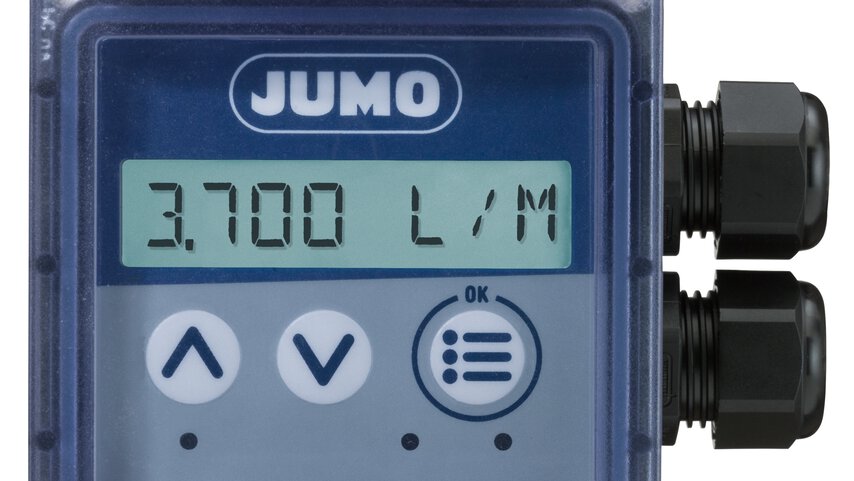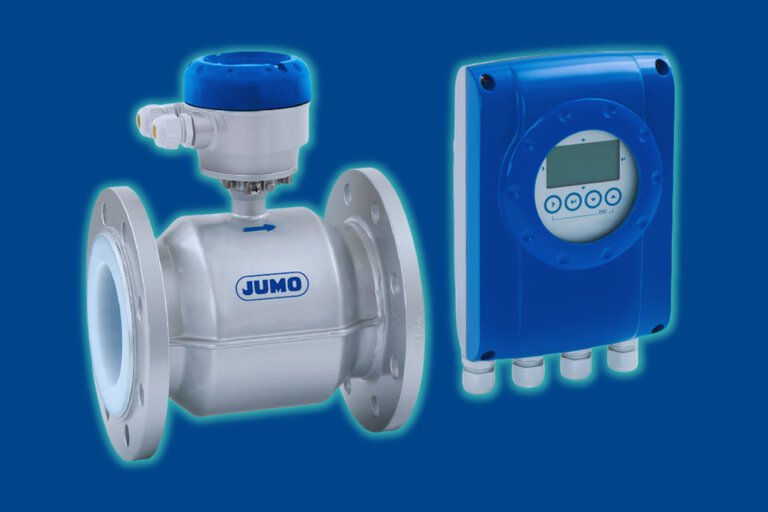

How does a magnetic-inductive flowmeter work?
In this article, we delve into the world of magnetic-inductive flowmeters, discussing their operation, advantages and applications in various industries. Learn how Faraday's law of electromagnetic induction is transformed into precise measurements, why the lack of moving parts is so important, and which industries use these devices most often. If you're considering implementing this technology in your business or want to learn more about how magnetic-induction flowmeters can contribute to your success, keep reading!
Magnetic-inductive flowmeters - operation
Magnetic-inductive flowmeters are based on Faraday's law of electromagnetic induction. The flowmeter has coils that create a magnetic field. When the medium is conductive (conductivity of at least 20 μS/cm) current flows through this field, a voltage is created between two electrodes. The value of the induced voltage is proportional to the intensity of the magnetic field, the speed of the fluid, and the diameter of the tube (U=B*v*D). The device converts this voltage into a signal that we can read, for example, as a 4-20 mA value.

Construction of the magnetic-inductive flowmeter
Advantages and Disadvantages of Electromagnetic Flow Meters
Advantages:
- No Moving Parts: This makes flow meters more durable and requires less maintenance.
- Capability to Measure Various Liquids: Effectively measures the flow of electrically conductive liquids, including those that are chemically aggressive and those with high solids content.
- High Measurement Accuracy: They offer measurement accuracy in the range of 0.5% to 1% of the measured value.
- No Hydraulic Resistance: They do not introduce additional resistance to the flow, which is beneficial for the energy efficiency of the system.
- Measurement Range: Wide measurement range, from very small to very large flows.
- Non-Invasive: No need to interfere with the liquid stream to make the measurement.
Disadvantages:
- Conductivity Requirements: Can only measure the flow of electrically conductive liquids. Liquids with low conductivity, such as pure distilled water, may not be suitable.
- Electromagnetic Interference: Can be sensitive to electromagnetic disturbances, which can affect measurement accuracy.
- Installation: Require an appropriate length of straight pipeline before and after the flow meter to ensure accurate measurement.
- Temperature and Pressure: May have limitations in terms of operating temperature and pressure, which should be considered when selecting the appropriate model.
In summary, electromagnetic flow meters offer many benefits, especially in specific industrial applications. However, like any device, they have their limitations, which should be considered when planning their purchase and installation.

Immersion magnetic-inductive flow meter with display JUMO flowTRANS MAG I02

JUMO flowTRANS MAG I01 submersible magnetic-inductive meter (MID)
Electromagnetic Flow Meter - Applications
Electromagnetic flow meters are indispensable in many industries due to their accuracy and versatility. This product is used in industries such as:
- Chemical and Petrochemical Industry: Measuring the flow of chemicals, monitoring production processes.
- Food Industry: Controlling the flow of food liquids, dosing ingredients.
- Water and Wastewater Management: Monitoring the flow of drinking water and wastewater.
- Energy Sector: Measuring the flow of cooling water, controlling heating systems.
- Paper Industry: Controlling the flow of paper pulp and water recycling processes.
- Pharmaceutical Industry: Measuring the flow of ingredients, controlling sterilization processes.
- Mining Industry: Monitoring the flow of mineral slurries.
- Steel Industry: Measuring the flow of cooling water, monitoring production processes.
- Pulp Industry: Controlling the flow of cellulose pulp.
- Sugar Industry: Measuring the flow of sugar juice and molasses.
At JUMO, we offer two electromagnetic flow meters in different variants: JUMO flowTRANS MAG I01 and JUMO flowTRANS MAG I02 with a display. Standardized connectors allow for easy installation of the flow meter in pipes with diameters ranging from DN 15 to DN 400. Application areas include neutral, contaminated, or aggressive liquids with a minimum conductivity of 20 µS/cm.

Technical specialist
Jakub Dąbrowski - Inside Sales Engineer +48882351471 Jakub.Dabrowski@JUMO.net +48882351471Comments
We encourage you to leave your comments via the form below. They will be posted online after they have been approved through our review process

